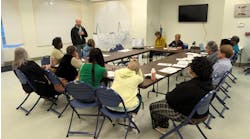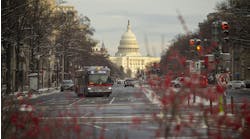University of Virginia publishes study on VPRA’s Transforming Rail in Virginia initiative detailing economic and social benefits
A new study has been published by the Weldon Cooper Center for Public Service at the University of Virginia detailing the economic and social impact of the Virginia Passenger Rail Authority’s (VPRA) Transforming Rail in Virginia (TRV) initiative. The study takes a deep dive into the benefits of expanding passenger rail service in the commonwealth and how the state’s investment in this transportation alternative will provide not only an economic boost to the state but will make generational changes in the way Virginians travel.
The TRV initiative calls for:
- The use of an existing rail corridor to expand transit options.
- The development of new transit infrastructure.
- Eventually separating freight and passenger rail services.
- Improving the on-time performance of both freight and passenger rail services.
Once this initiative is complete, VPRA will fund a total of 13 daily Amtrak roundtrips, up from the current eight, along four corridors between Washington, D.C., and Roanoke, Newport News, Norfolk and Richmond, Va.
The Transforming Rail in Virginia: Economic and Social Impacts study estimates that spending nearly $4.7 billion on TRV’s infrastructure projects will result in:
- The creation of 33,688 jobs.
- Generating $2.6 billion in labor income.
- $4 billion in added value.
- $6.7 billion in statewide economic output.
“The results of the Transforming Rail in Virginia study reveal the importance of advancing a transportation plan that includes rail as an alternative to driving,” said VPRA Executive Director DJ Stadtler. “The economic benefits are clear, but including the social impacts reveal how rail can significantly benefit communities, safety and the environment.”
The study also mentions that the impacts of TRV are not limited to economic development. The transportation improvements will influence future property values and land use decisions, as well as positively impact accessibility and social wellbeing. The report also shines light on ways TRV can promote rail, removing barriers to its use by offering more service to more locations, creating regular users from those who previously had not considered rail as a viable alternative.
Secondary impacts include the diversion of traffic from vehicles to passenger rail resulting in reduced road congestion, lower vehicle emissions and improved safety. TRV could also take the opportunity to enhance the quality of life of Virginians by expanding access to employment centers, educational institutions and recreational areas as well as promoting tourism throughout the state.



